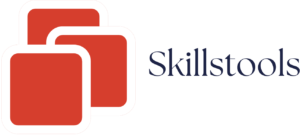ACE-X
/0 Comments/in Skillstools news/by leif-erikACE- EX Agriculture Circular Economy EXpert
Euromasc and NTIM attending ACE-X kick-off in Bergamo 11-12.9.23
The disappearance of migrant children in Norway
/0 Comments/in Skillstools news/by leif-erik
Migrant children are disappearing in Europe in troubling numbers. The organisation “Lost in Europe” can report that since they were founded in 2021 “18,000 unaccompanied child migrants have disappeared after arriving in Europe” (Lost in Europe, 2023). Some of these children have been trafficked throughout Europe. In Norway 432 unaccompanied minor asylum seekers have gone missing without a trace, and the police have done little to find them. Several of the minors that have disappeared cannot be found in the police’s systems, not all are reported missing, and many missing persons reports lay untouched for a long time before a case is opened. This is a summary of the status in Norway, mainly comprising of articles from the Norwegian Broadcasting Corporation (NRK) who have reported on this issue.
The Office for Children, Youth and Family Affairs (Bufetat) are responsible for providing unaccompanied minors under 15-years-old the option of living at a care centre while their asylum application is being processed. While a minor is living in a care centre Bufetat are responsible for them. UDI is responsible for the asylum seekers over 15 years old, and they are moved from care centres to reception centres. The centres are a voluntary housing offer, and the residents can leave the premises when they so whish, and UDI holds no authority to detain or keep them at the premises. It is speculated that some of the minors that disappear are in fact legal adults. Many asylum seekers arrive undocumented, and a “presumed age” is not determined until the end of the asylum process. Nevertheless, the problematic nature of people disappearing without a trace remains.
The newspaper “Utrop” reports that “between 1.1.2015 and 31.3.2021, 854 unaccompanied minor asylum seekers left Norwegian reception or care centres without providing a new address. The whereabouts of 422 of these are known, most of them residing abroad and 68 people have been granted residence and reside in Norway” (Holte, 2021). 412 unaccompanied minor asylum seekers had disappeared, seemingly lost without a trace. According to the Norwegian Directorate of Immigration (UDI) “a majority of those that move from a reception centre without providing a new address can be sorted into two groups: Those that left the reception centre very early in the asylum process, and those who left after they were rejected” (Holte, 2021).
Since 2015, 432 unaccompanied minors who have applied for asylum in Norway have disappeared. Several parties in the Norwegian Parliament demanded an investigation into the matter, but the proposal to investigate the cases was voted down. These children and youths are under the care of the government, who have a duty of confidentiality, so limited information about them is often available to the public. The police are often either involved late in the case, or take a long time opening up a case file, if one is opened up at all.
Most of the disappearances involve teenagers over 15 years old, but some involve small children. Five of the children were under 10 years old when they disappeared, and the youngest was 5. In a recent case from July 2023 a 17-year-old girl disappeared the night she arrived in Norway. The asylum reception reported her missing the day after she disappeared. The police first opened a missing persons file five days later. The police contacted the reception centre, and subsequently closed the case. The girl is yet to be found. In a case from 2015 it took two months before the minor was reported missing. She was also never found.
In an analysis of 49 dismissed cases of disappearance of migrant minors Associate Professor Dr. Egil Hove Olsvik found that:
- “In only two of the instances the police showed up at the location where the child disappeared from.
- The police have not collected physical or electronic traces, have not conducted interviews with possible witnesses and have not carried out extensive searches in international police registers.
- Notifications about human trafficking and prostitution have not been followed up.
- Adults have collected children from reception centres without identifying themselves.” (Politihogskolen, 2023)
References
Bufdir. (2023). Einslege mindreårige asylsøkjarar. Hentet Sept. 07, 2023 fra Bufdir: https://www.bufdir.no/fagstotte/barnevern-oppvekst/ema/
Helledal, E., & Aarbakke, M. (2023, Aug. 30). Jente forsvant, politiet lette aldri. NRK. Hentet Sept. 05, 2023 fra https://www.nrk.no/vestland/politiet-leter-fortsatt-ikke-etter-asylbarn-som-forsvinner-1.16518142
Helledal, E., Fossåskaret, R., Aarbakke, M., Sørnes, I., Gilleshammer, T., & Rognsvåg, S. (2022, Dec. 03). Den usynlige. NRK. Hentet Sept. 07, 2023 fra https://www.nrk.no/vestland/xl/den-usynlige-1.16172449#authors–expand
Holte, E. (2021, May 04). Barn som forsvinner fra asylmottak kan bli ofre for menneskehandel. Utrop. Hentet Sept. 07, 2023 fra https://www.utrop.no/nyheter/nytt/258025/
Lost in Europe. (2023). About Lost in Europe. Hentet Sept. 07, 2023 fra Lost in Europe: https://lostineurope.eu/about-lost-in-europe
Politihogskolen. (2023). Politihøyskolen.no. Hentet Sept. 05, 2023 fra Avdekker svakheter om asylbarn som forsvinner: https://www.politihogskolen.no/forskning/nyheter-forskning/avdekker-svakheter-om-asylbarn-som-forsvinner/
Rognsvåg, S., Aarbakke, M., Helledal, E., & Sørnes, I. (2022, Dec. 08). NRKs asylbarn-avsløring skakar Stortinget. No krev fleire parti ei gransking. NRK. Hentet Sept. 05, 2023 fra https://www.nrk.no/vestland/fleire-politiske-parti-krev-gransking-av-sakna-asylsokarar-1.16192277
Aarbakke, M., Sørnes, I., Rongsvåg, S., & Helledag, E. (2022, Dec. 6). Hundrevis av barn og unge sporløst borte: Gutt (9) er fremdeles savnet etter syv år. NRK. Hentet Sept. 05, 2023 fra https://www.nrk.no/vestland/432-barn-og-ungdommer-har-forsvunnet-fra-norske-asylmottak.-politiet-leter-sjelden-etter-asylsokerne-1.16184402
EUROMASC in LOST2 Project
/0 Comments/in Skillstools news/by leif-erik
EUROMASC is a partner in the European project LOST2, which aims to address the increasing problem of missing people in Europe. The main focus is on young people, of which around 200’000 are reported missing across the continent, but only 1/3 are ever found.
LOST2 intends to create a unified European system for researching and finding missing people and minors, by creating a standard professional profile for “Experts in the Research of Missing People & Minors”.
Our role in the project is to assist in the development of a comprehensive qualification description based on learning outcomes and units of learning outcomes, according to the European guidelines found in European credit system for vocational education and training (ECVET) and the European Qualification Framework (EQF).
Our first main contribution was done during our Joint Staff Meeting in Madrid in July. Here, EUROMASC presented a proposal about the Standard of our profile, the “Expert in the Research of Missing People & Minors”. The goal of the presentation was to go from the “Dictionary of Competences” to a “Qualification matrix description”. The first step was to describe what learning outcomes are.
They can be described as:
- The building blocks of the qualification.
- Statements of what a learner knows, understands, and is able to do.
- Knowledge, Skills, and Competence (Responsibility and Autonomy).
- Need to be understandable, logically structured, and capable of evaluation.
- When writing them, use action verb.
- Describes professional, personal, and social competences.
The second step as to give the partners a short introduction into EQF. The EQF is an 8-level, learning outcomes-based framework for all types of qualifications that serves as a translation tool between different national qualifications frameworks. This framework helps improve transparency, comparability and portability of people’s qualifications and makes it possible to compare qualifications from different countries and institutions. The level increases according to the level of proficiency, level 1 is the lowest and 8 the highest level. Most importantly the EQF is closely linked to national qualifications frameworks, this way it can provide a comprehensive map of all types and levels of qualifications in Europe, which are increasingly accessible through qualification databases.
This introduction was important, because as we are creating the qualification matrix, it needs to be on a specific EQF level. The level helps writing the learning outcomes, as they have to reflect the EQF level one tries to achieve.
The last step to understand the standard we want to operate within, is ESCO. ESCO (European Skills, Competences, Qualifications and Occupations) is the European multilingual classification of Skills, Competences and Occupations. ESCO works as a dictionary, describing, identifying and classifying professional occupations and skills relevant for the EU labour market and education and training. It provides descriptions of 3008 occupations and 13.890 skills linked to these occupations, translated into 28 languages (all official EU languages plus Icelandic, Norwegian, Ukrainian, and Arabic).
This is also important to our project, as it provides relevant descriptions of functions and tasks that our Expert is expected to know and do. It will also facilitate the placement of the profession within a European framework. There is no profession within ESCO that fits our Expert. This is positive, as it shows the need for such a profile. It was however possible to find out that such a profile should be within the ESCO code 341, which deals with legal, social and religious professionals. Both the Legal (3411) and social work (3412) professionals contains relevant descriptions for our profile.
After the introduction of the European frameworks and why they are important for our project, the partners were asked to use the dictionary of competences to create a first draft of the qualification matrix. The main objective was to create a unit structure, so that the writing of learning outcomes could be easier. The partnership was divided into groups, and their suggestions were then put together into one preliminary unit structure, as shown below.
The next phase of the project will see the creation of relevant learning outcomes within this structure, which then will be used to create the training programme(s) and the assessment structure.
- Unit 1: Assistance and Prevention
- Unit 2: Family support
- Unit 3: Research and implementation
- Unit 4: Data collection and analysis
- Unit 5: Finalisation of investigation
